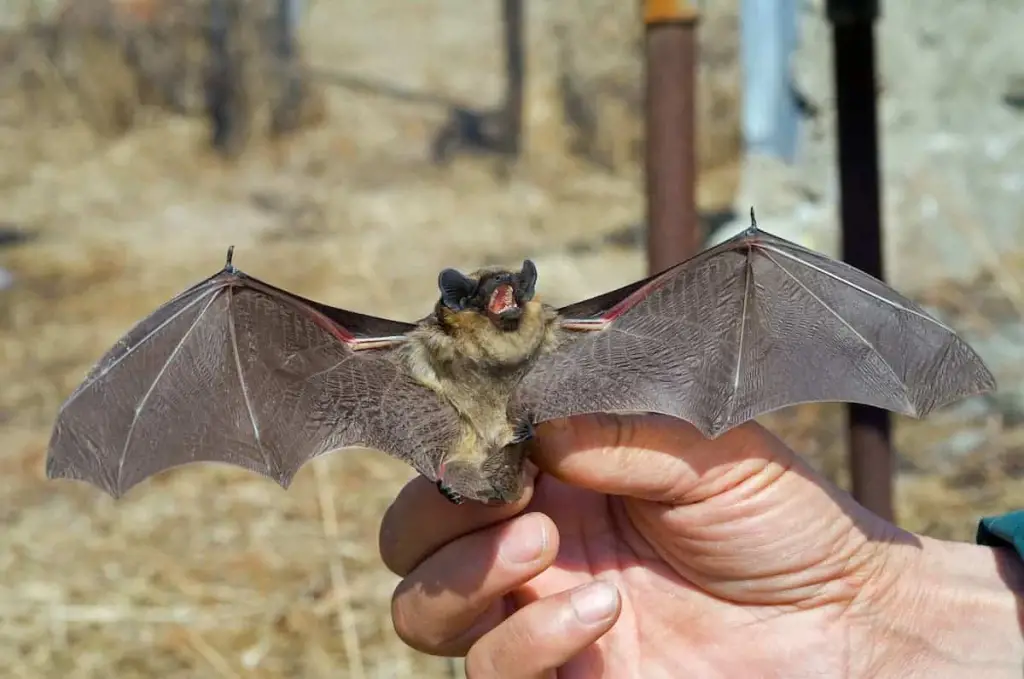
As primarily carnivorous animals with an innate ability to hunt for prey, cats do eat bats. It is a concern for many pet owners but understanding a cat’s nature, how they go about it, and where they hunt is equally essential.
Having a cat at home does not deprive them of their primal instinct to hunt for prey. They hunt for fish, mice, and bugs; bats are no exception. What makes it different is that bats have a reputation for carrying certain diseases, including rabies. That’s what makes it a concern for many. However, here we’ll talk about if cats eat bats, how they hunt them and what happens to them. Knowing what to do if your cat wanders in with a bat in its mouth is vital information.
How often do cats eat bats?
Cats eat bats, but this is the exception rather than the rule. It only happens if you, as a homeowner, have bats somewhere in your household or nearby places where your cat can prey on and catch them. Equally, bats often fly or settle on high-to-reach places though a cat can still have access to them. However, that is not to say that it can’t happen even if that’s not the case.
Where do cats locate bats?
There are common locations where a cat can interact with a bat in and around the home. The top spaces are cracks and holes in the house, including the roof and chimneys, the attic, and the basement. The cat can find bats in trees, sheds, bans, and other nearby structures in your compound. Beyond that, there are forests and waterways.
Outdoor cats have a higher chance of running into bats. They are even harder to keep your eye on as you’re unsure what animals they have encountered or even eaten. Equally, if you have an older home with some structural issues, your cat is likely to chance on a bat too.
How do cats locate bats?
Your cat will sense and locate the presents of bat long before you do- if you ever do- thanks to their exceptional hearing, sight, and sense of smell. Screeching bats fleeing from your cat might even sometimes be the only way you become aware of bats within and around your home. That said, don’t send your cats into holes, cracks, sheds, and other spaces to locate bats. For them, it’s a predator versus prey game, and they aren’t aware of the consequences of interacting with bats.
How do cats hunt bats?
A cat is on their feet, and a bat can fly away. Therefore, it is not always easy to picture how a cat can hunt and eat a bat. Despite their depiction in movies, bats are naturally calm, even the rabid ones. They also are typically small and only look large when they spread their wings. Bats are inactive during the day and thus become easier prey for a playful or hungry cat. Overall, it means that a bat will not be afraid of an approaching cat (keeping in mind how agile and stealthy cats are).
Bats will only react when attacked and not the other way around. A cat can attack a bat while the others flee the area. Domesticated cats can do the same without learning this from their wild counterparts. Most of all, cats play with what they think is food before eating it. If you’re lucky, you’ll find your cat doing just that, and you can deescalate the situation.
What happens to cats that eat bats?
The main concern is that bats carry many diseases, most of which get transferred to a cat that has clawed, bitten, or devoured a bat. The most commonly known disease that bats carry is rabies. The symptoms to look out for are vomiting, diarrhea, stomach pain, choking, and even swelling of the mouth. However, it’s not always easy to tell if a cat has eaten a bat, as these symptoms typically manifest when it eats meat with harmful bacteria.
Even with that, there is some good news. The chances of a cat getting rabies are pretty low. Rabies is a virus transmitted through saliva. Therefore, it depends on what part of the bat the cat bit or ate, and equally, if the bat had rabies in the first place. Either way, if you suspect your cat did interact with a bat or even have evidence of it, ensure you take your cat to the vet for immediate treatment before the condition sets in or get worse.
Questions about cats eating bats |
The answers |
Where do cats find bats? |
In homes with vacant spaces (cracks, holes, attics, roofs, basements), the compound (trees, sheds, barns, other structures) beyond the home parameter (forests and waterways) |
How do cats find bats? |
Cats have primal sensitivity in both seeing and hearing, spotting prey from a long distance |
How do cats hunt bats? |
Cats are stealthy by nature when hunting prey, while bats are calm and won’t respond unless directly provoked, especially during the day when they are inactive |
How often do cats eat bats? |
Outdoor cats and those in homes with older structures are more likely to interact with bats |
What to do when a cat eats a bat |
If you witness your cat eating or having eaten a bat, remove them from the bat and quarantine them before taking them to a vent. |
Conclusion
Cats eat bats, even though it is not their go-to meal or a creature they interact with often. Cats will play, kill and then eat something since they are predatory by nature, and the bat is no exception. While you may be dismayed by your cat eating an animal with a high potential of carrying disease, don’t be too surprised if it happens.
FAQs
Which is faster; cats or bats?
Factually, bats are faster because of their wings. However, what makes them prey to cats is when they are hanging on walls on ceilings, which gives the cat a higher advantage on speed.
Is it normal for a cat to eat bats?
While it is not a usual occurrence given where bats tend to live, a cat can chance on bats in hidden spaces in and around a home and take the opportunity to get a quick meal.


